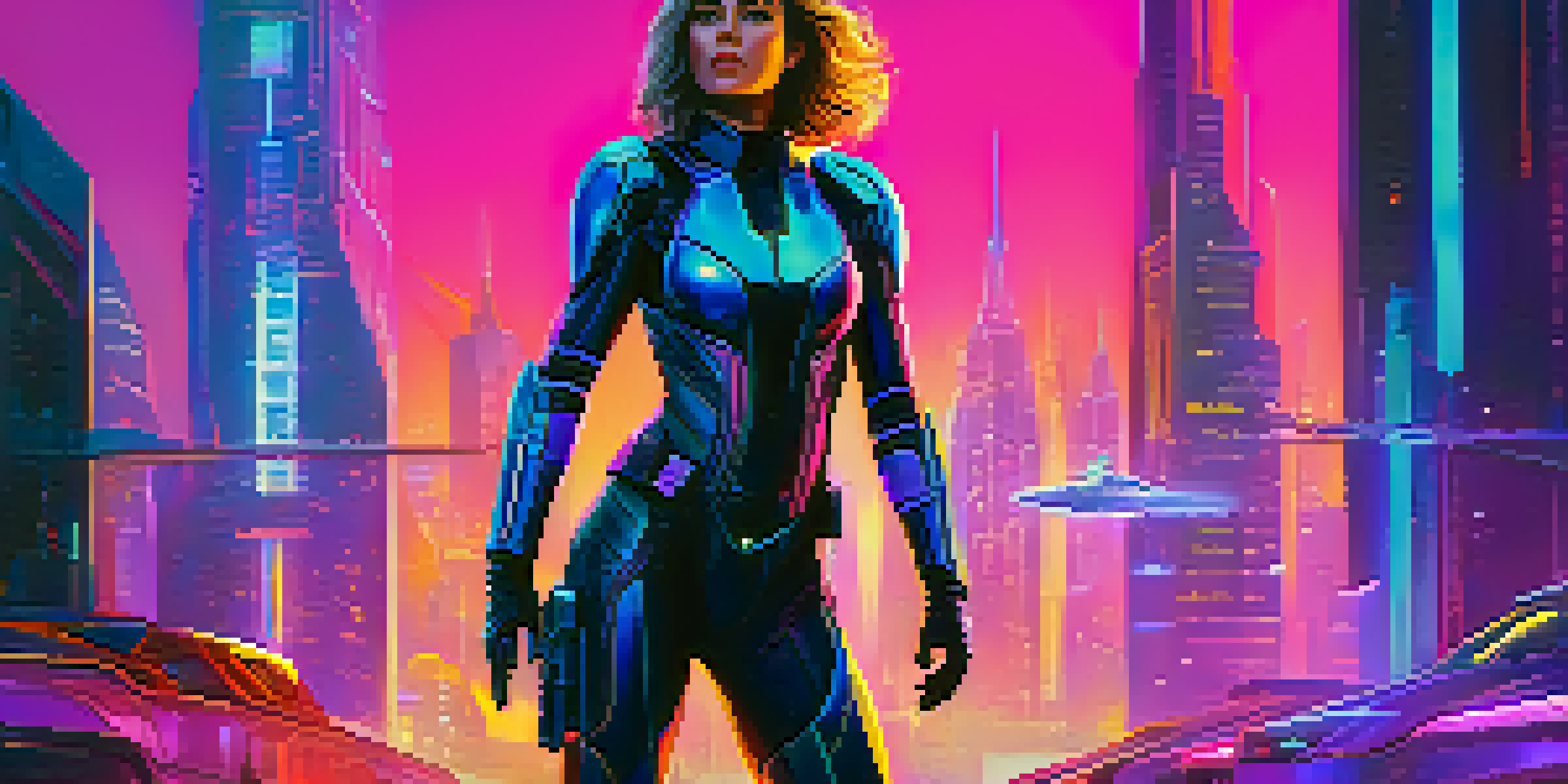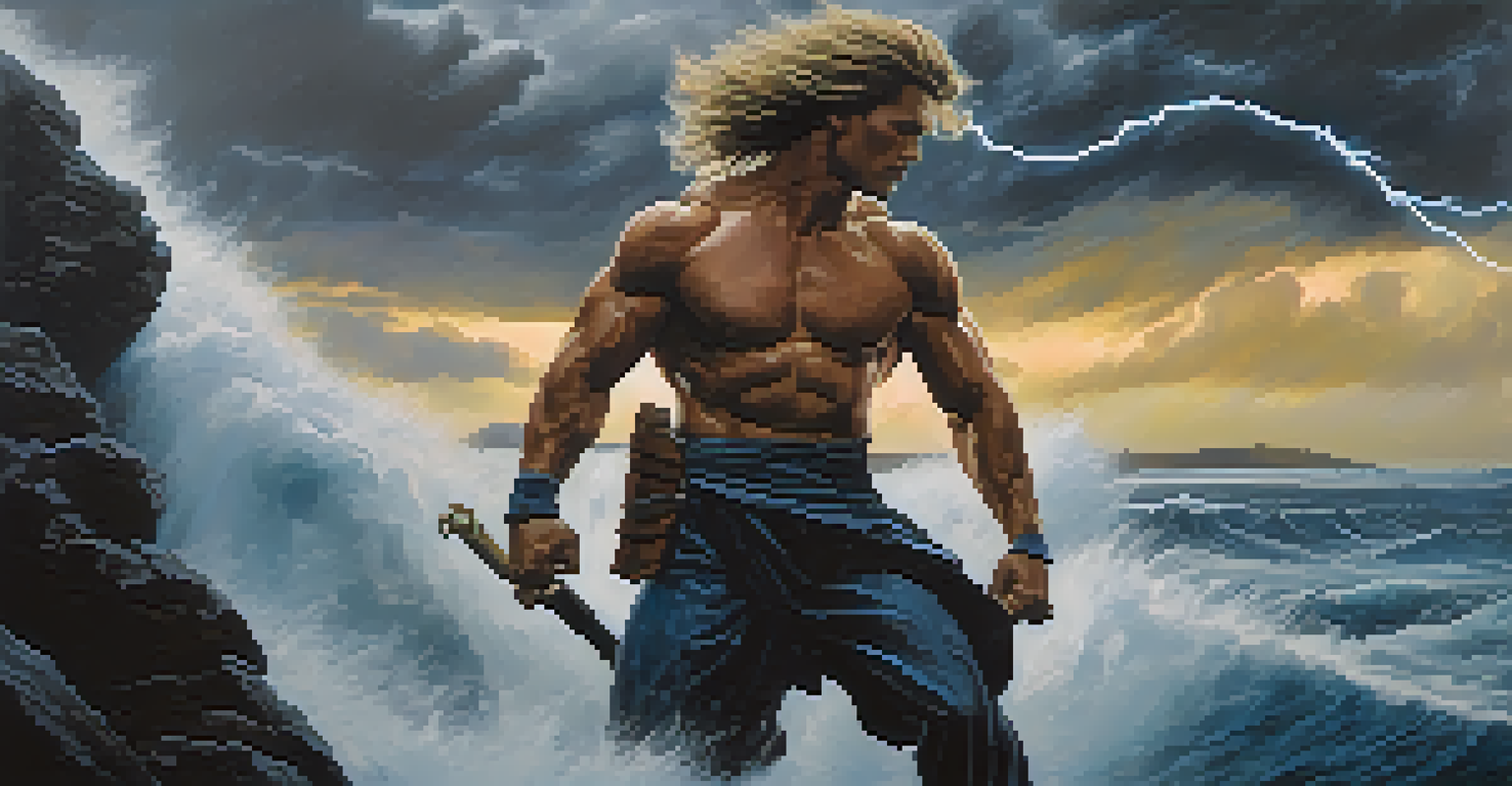Action Heroes: Gender Representation in Action Films

The Evolution of Action Heroes in Film History
Action films have a rich history, evolving from classic heroes like John Wayne to modern-day icons such as Jason Bourne. This shift reflects broader societal changes and the way masculinity is portrayed on screen. Interestingly, female characters have gradually transformed from mere sidekicks to formidable protagonists, showcasing strength and resilience.
The future belongs to those who believe in the beauty of their dreams.
In the early days of cinema, action heroes were predominantly male, often depicted as rugged lone wolves. However, as more diverse voices entered the filmmaking arena, we began to see female characters taking on leading roles. Films like 'Aliens' and 'Kill Bill' have played pivotal roles in redefining what it means to be an action hero, regardless of gender.
This evolution not only entertains but also challenges stereotypes, pushing audiences to reconsider traditional gender roles. Today, we celebrate action heroes of all genders, highlighting how these characters reflect the complexities of modern society.
The Rise of Female Action Heroes
In recent years, female action heroes have taken the spotlight, breaking through the glass ceiling of the action genre. Characters like Wonder Woman and Furiosa from 'Mad Max: Fury Road' demonstrate that women can be just as powerful and compelling as their male counterparts. These characters often blend strength with vulnerability, making them relatable and inspiring for audiences.

The presence of female-led action films has not only reshaped the genre but has also sparked discussions about gender equality in Hollywood. It's refreshing to see studios investing in stories that prioritize female protagonists, as they resonate with a broader audience. Furthermore, these films often challenge the notion that action is a male-dominated space.
The Rise of Female Action Heroes
Female action heroes are increasingly taking center stage, reshaping the genre and challenging gender stereotypes.
Female action heroes have become role models for many, proving that bravery, skill, and determination are not confined to one gender. Their stories inspire viewers to embrace their own strength, regardless of societal expectations.
Toxic Masculinity and Its Impact on Action Films
Toxic masculinity has shaped many action films, often depicting men as emotionally stoic, aggressive, and hyper-competitive. This portrayal not only limits the character development of male heroes but also reinforces harmful stereotypes. The rigid expectations placed on male characters can lead to a narrow understanding of what it means to be strong.
Diversity is being invited to the party; inclusion is being asked to dance.
As we critically examine these themes, it becomes clear that action films can do better. By allowing male characters to show vulnerability and emotional depth, filmmakers can create more nuanced narratives. This shift not only enriches the storytelling but also encourages healthier representations of masculinity.
When action heroes break free from the constraints of toxic masculinity, they become more relatable and real. Audiences can appreciate their struggles and triumphs, fostering a deeper connection that transcends traditional gender roles.
Intersectionality in Action Films
Gender representation in action films is not a monolith; it intersects with race, sexuality, and class. While we've seen an increase in female action heroes, it's crucial to highlight that not all women are represented equally. Characters from diverse backgrounds bring unique perspectives and experiences, enriching the storytelling landscape.
Films like 'Black Panther' and 'Crazy Rich Asians' showcase how intersectionality can create powerful narratives that resonate with a wide audience. These films challenge the norm by placing traditionally marginalized characters in heroic roles. This representation not only validates these experiences but also allows viewers to see themselves as heroes.
Impact of Toxic Masculinity
Toxic masculinity limits character development in action films, highlighting the need for more nuanced portrayals of male heroes.
As the film industry continues to evolve, it must prioritize diverse stories that reflect the complexities of our society. By embracing intersectionality, filmmakers can create action films that are not only entertaining but also socially relevant and impactful.
The Role of Directors and Writers in Shaping Representation
The vision of directors and writers plays a pivotal role in shaping gender representation in action films. Strong female directors like Patty Jenkins and Gina Prince-Bythewood have demonstrated that women's perspectives can create compelling action narratives. Their work challenges traditional storytelling and brings fresh ideas to the genre.
When women hold the reins in filmmaking, we often see more authentic portrayals of female characters. This shift helps dismantle stereotypes and allows for a variety of experiences to be explored on screen. Diverse voices in the writers' room contribute to more rounded characters that resonate with audiences.
Ultimately, the stories we tell and how we tell them can significantly influence societal views on gender. By supporting diverse filmmakers, we can help pave the way for a broader range of stories that reflect the world we live in.
Audience Reception and Expectations of Action Films
The audience's expectations play a crucial role in the success of action films, particularly regarding gender representation. Viewers have become more discerning, often demanding authentic and diverse portrayals of characters. This shift in audience expectations is influencing the types of stories that studios choose to greenlight.
As we see more female-led action films garnering box office success, it signals a growing appetite for diverse narratives. Audiences are increasingly drawn to stories that challenge the status quo, leading to a more inclusive film landscape. This change not only benefits viewers but also encourages filmmakers to take creative risks.
Embracing Intersectionality
Diverse representation in action films enriches storytelling and reflects the complexities of modern society.
Ultimately, audience reception shapes the future of action films. By supporting diverse stories and characters, we can influence the industry to continue evolving towards greater representation and inclusivity.
The Future of Gender Representation in Action Films
As we look to the future, the potential for gender representation in action films appears promising. With more filmmakers championing diverse stories, we can expect to see a wider range of characters and narratives that reflect our multifaceted society. This evolution is essential for creating a more inclusive entertainment landscape.
The demand for authentic representation is at an all-time high, and studios are beginning to respond. We are witnessing an increase in projects that prioritize female protagonists and diverse supporting characters. This trend signifies a cultural shift that values inclusivity and authenticity in storytelling.

In conclusion, the future of gender representation in action films hinges on our collective efforts to support diverse voices. By celebrating stories that reflect the complexities of our world, we can ensure that action films continue to evolve and inspire generations to come.